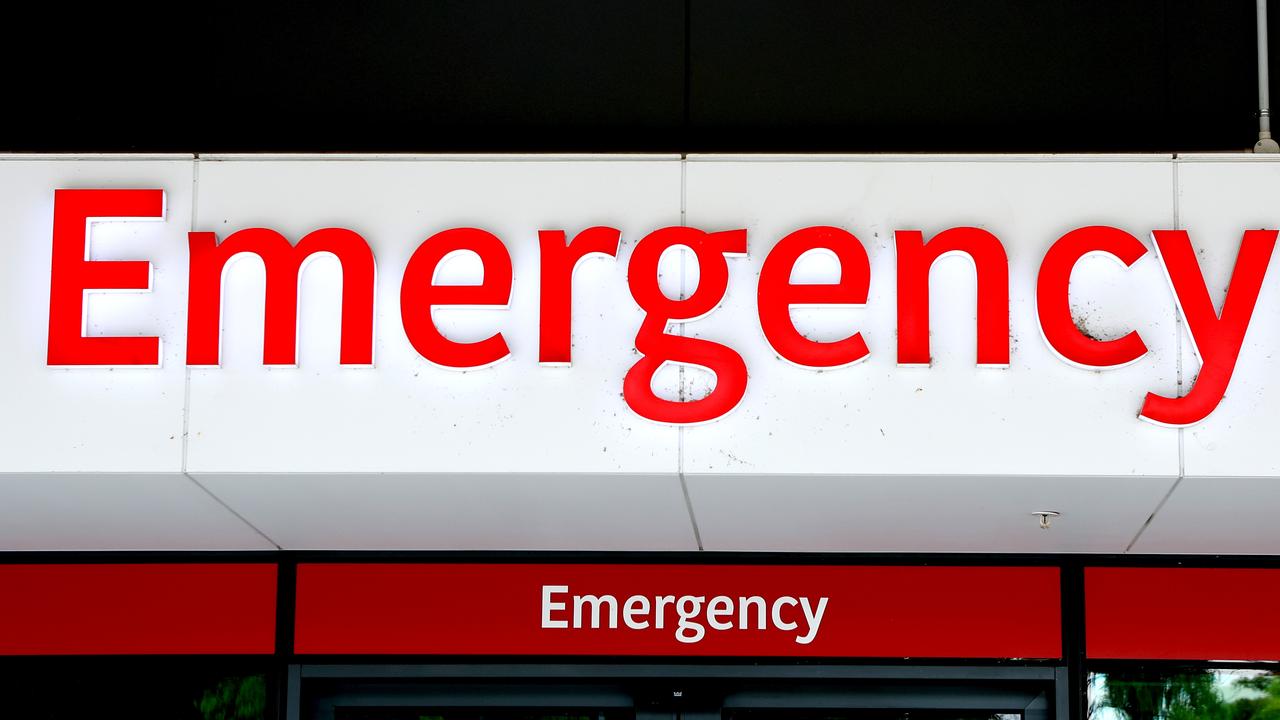New ways to diagnose health conditions using a smartphone
Did you know your smartphone can take an ultrasound, run a urine test, diagnose Parkinson’s disease and multiple other health conditions? See how.

Health
Don't miss out on the headlines from Health. Followed categories will be added to My News.
Australians are on the brink of being able to self-diagnose eye damage, and gauge skin cancer risk and 25 other conditions, using the convenience of their smartphones.
The brainchild of Professor Minas Coroneo at Prince of Wales Hospital, a revolutionary UV-light camera is fitted to a smart phone to capture images of the eye.
An app on the phone analyses these images to diagnose a type the eye disease pterygium which is a warning sign for early stage skin cancer.
The device, likely to cost around $100, will bring the expertise of an eye specialist directly to the palm of your hand.
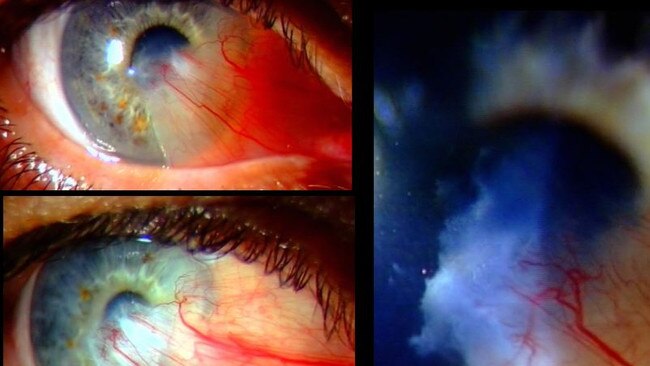
Professor Coroneo, who used to work with celebrated ophthalmologist Fred Hollows, said pterygium is a fleshy growth on white part of the eye that causes blocked or blurred vision.
It is known as “surfer’s eye” because nine in 10 surfers develop the condition due to sun damage and studies show 10 years after it appears many of those with the condition will go on to develop skin cancer.
“We did a study of schoolchildren in and around Randwick, where I’m based, and we found that about 18 per cent of kids have early signs of this type of damage,” Prof Coroneo said.

While the damage heals in many Australians, around seven per cent will go on to develop pterygium and Prof Coroneo hopes the device will drive people to wear sunglasses and hats to stop the risk.
“Young people have apps for everything. If you go click and it gives you an image of your eye with some damage on it, and you can follow it during the course of the year, you might take some notice of that,” he said.
Retired greenkeeper and surfer Peter Phillips was diagnosed with a malignant melanoma at age 36.
He has since had multiple minor melanomas removed as well as around 100 basal cell skin cancers.

“I spent literally my whole life outdoors because, apart from greenkeeping, I’d go surfing, so I spent a lot of time in the sun,” Mr Phillips said.
The now 60-year-old also developed a pterygium which started as a bloodshot eye and eventually grew across his pupil affecting his eyesight.
He had to have it surgically removed twice.
He is very enthusiastic about a phone device that would allow people to self diagnose the condition.
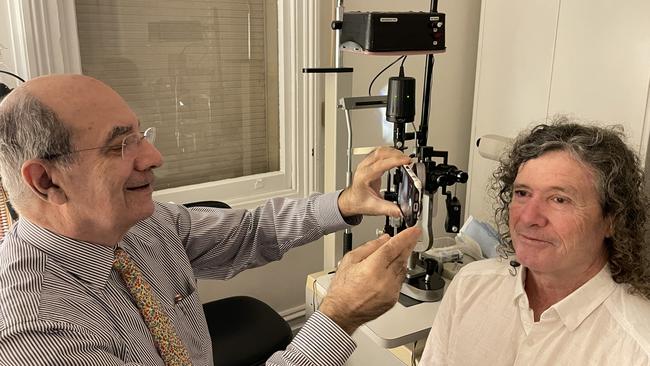
“Obviously, it’s too late for me, but for the younger generations it’ll be fantastic because you can check your eye and then it will show up way before you show signs of skin damage and might want to take more precautions,” he said.
A study to prove the new device is as good as a desktop device that measures the eye damage is being held at Sydney’s Prince of Wales Hospital and has been made possible thanks to a $125,000 grant from Prince of Wales Hospital Foundation.
It is one of a number of advances that is turning the mobile phone into a doctor in your pocket.
DIAGNOSING PARKINSON’S DISEASE
RMIT University researchers in Victoria have unveiled an AI-powered smartphone app that deciphers voice cues to identify potential Parkinson’s cases in a mere 10 seconds.
Lead researcher Professor Dinesh Kumar explains that people with Parkinson’s have distinctive voice changes caused by symptoms of rigidity, tremor, and slowness.
WHAT IS CAUSING MY COUGH – ASTHMA, PNEUMONIA OR BRONCHIOLITIS?
University of Queensland biomedical engineer Associate Professor Udantha Abeyratne uses a smartphone app to analyse a patient’s cough to identify whether they have asthma, croup, pneumonia, lower respiratory tract disease, Chronic Obstructive Pulmonary Disease and bronchiolitis.
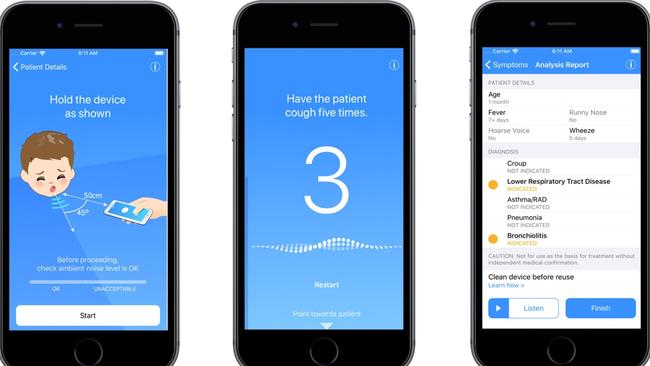
IS MY CONCUSSION IMPROVING?
A smartphone app called Reflex is being trialled to check the recovery of patients with concussions by measuring the eyes’ response to light.
HAVE I HAD A STROKE?
A new smartphone tool developed by biomedical engineers at RMIT University could help paramedics to identify stroke in seconds by using AI to measure facial symmetry.
When people suffer a stroke, one side of their face typically behaves differently to the other side and the AI tools and image processing on the phone can detect whether there is any change in the asymmetry of the smile.
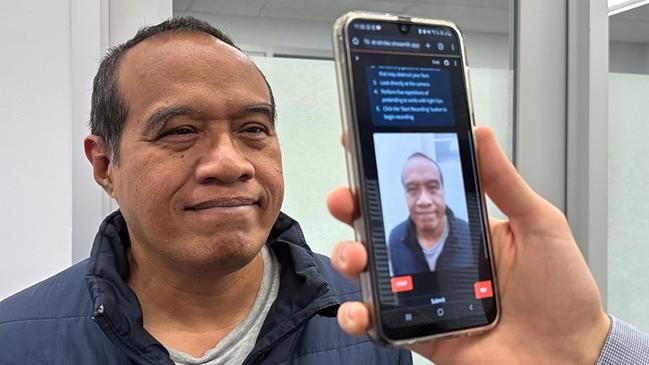
AM I ABOUT TO GET A VIRUS?
Apple’s upcoming new watchOS 11 will feature a new Vitals app that will notify users when two or more metrics are out of their typical range, alerting users to onset of illness.
CHECK YOUR HEART HEALTH
Smart watches are already able to collect information on a person’s heart rate, blood pressure, respiratory rate and can even perform an ECG to detect heart problems.
DO I HAVE AN EAR INFECTION?
US researcher Erik Douglas created a tiny device that converts a smartphone camera into a probe that doctors can use to diagnose pediatric ear infections.
DO I HAVE A THROAT INFECTION?
A picture of the throat taken on a smart phone can help a doctor diagnose and infection using another application.
DO I HAVE A TEMPERATURE OR LOW PULSE RATE?
One app even allows you to scan your vital signs just by placing the device on your forehead to measure heart rate, and body temperature.
DOES MY CHILD HAVE A HEART SIDE EFFECT FROM CHEMOTHERAPY?
Kids with cancer are having checks for a deadly treatment side effect made easier in a trial run by Murdoch Children’s Research Institute (MCRI) that will see them use an Apple Watch to monitor damage to detect prolonged QT syndrome, which creates an irregular heart rhythm. The condition is a known side effect of chemotherapy.
TRACK YOUR PREGNANCY HORMONE LEVELS
Symex Labs in Melbourne is developing a smart patch that will continuously track hormone levels through the skin and transmits the data to a mobile phone removing the need for regular visits to IVF clinics for blood tests.
SMART STETHOSCOPE
The StethIO device turns a smartphone into a stethoscope that captures heart and lung sounds and converts them into a visual representation of sound frequencies.
DO YOUR OWN ULTRASOUND
The mobile phone has been turned into a portable ultrasound device by Butterfly iQ. The ultrasound probe plugs into the charging socket and delivers images displayed on the phone screen.
ANALYSE URINE TEST OR CHECK WOUND HEALING
Healthy.io has turned the smartphone camera into a clinical grade medical device that conducts urine analysis for kidney disease, another application allows the phone to track wound healing over time.
CHECK FOR SLEEP APNOEA
Australian researchers won FDA approval for an iPhone app SleepCheckRx that screens for obstructive sleep apnoea by listening to breathing and snoring.
University Queensland’s online health expert Associate Professor Liam Caffery said the rapid development of smart phone medical technology was a bit like “the wild west”.
“There are thousands of apps that people can download with no knowledge about whether they are effective or safe,” he said.
Meanwhile there were others that had been approved by the Therapeutic Goods Administration.
The other problem is that doctors are reluctant to adopt new technologies because they were risk averse and “you won’t get a lot of clinicians to do it unless there’s a funding model to support it”, he said.
More Coverage
Originally published as New ways to diagnose health conditions using a smartphone





